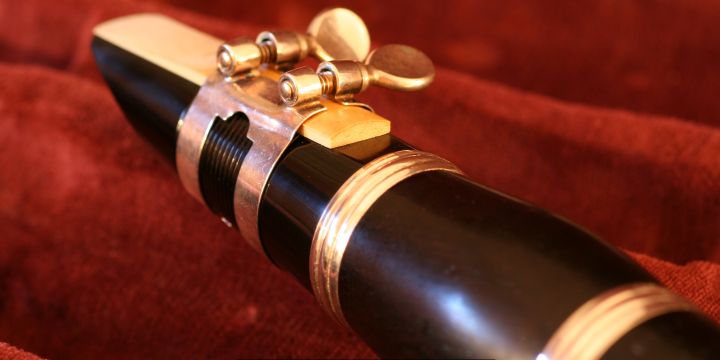Cracked clarinet mouthpieces can be a frustrating issue for musicians, often arising from a combination of environmental factors and improper handling. One of the primary causes of cracks is temperature fluctuations. Wood, the material commonly used in many clarinet mouthpieces, is sensitive to changes in temperature and humidity.
When exposed to extreme conditions, the wood can expand and contract, leading to stress fractures. For instance, a mouthpiece left in a hot car or exposed to cold drafts may develop cracks over time, compromising its integrity and sound quality. Another significant factor contributing to cracks is physical impact.
Musicians often transport their instruments in cases that may not provide adequate protection. A mouthpiece can easily be damaged if it is dropped or knocked against a hard surface. Additionally, improper cleaning techniques can exacerbate the problem.
Using harsh chemicals or excessive force while cleaning can weaken the material, making it more susceptible to cracking. Understanding these causes is crucial for clarinet players who wish to maintain their instruments and avoid costly repairs.
Visual Inspection
Musicians should begin by conducting a thorough visual inspection of the mouthpiece in a well-lit area is ideal for this process. Players should look for visible cracks, chips, or any irregularities in the surface. Even small hairline fractures can affect the performance of the mouthpiece, so it is important to examine every inch carefully.
Assessing Functionality
In addition to visual inspection, players should also assess the functionality of the mouthpiece. This can be done by playing a few notes and paying attention to any changes in sound quality or response. If the mouthpiece produces an unusual sound or feels uncomfortable while playing, it may indicate that the crack has compromised its structural integrity.
Determining the Next Course of Action
By combining visual assessment with practical testing, musicians can gain a clearer understanding of the damage and decide whether they can attempt repairs themselves or if professional help is needed.
When it comes to repairing a cracked clarinet mouthpiece, having the right tools and materials on hand is essential for a successful outcome. First and foremost, a high-quality adhesive specifically designed for wood repairs is necessary. This type of glue will provide a strong bond while remaining flexible enough to withstand the stresses of playing.
Additionally, fine sandpaper or a sanding block will be needed to smooth out any rough edges around the crack before applying adhesive. Other useful items include a small brush or applicator for spreading the glue evenly, as well as clamps or rubber bands to hold the pieces together while the adhesive cures. A magnifying glass can also be beneficial for inspecting small cracks more closely.
Finally, having a clean cloth on hand will help with any cleanup after the repair process. By gathering these tools and materials beforehand, musicians can streamline their repair efforts and increase their chances of success.
Repairing a cracked clarinet mouthpiece requires careful attention to detail and patience. The first step in the process is to clean the area around the crack thoroughly. Using a soft cloth, musicians should remove any dirt or debris that may interfere with the adhesive bond.
Once clean, they should examine the crack closely to determine if it can be aligned properly for repair. Next, players should apply a small amount of wood adhesive to both sides of the crack using a brush or applicator. It is important to use just enough glue to cover the area without excess oozing out when pressed together.
After applying the adhesive, musicians should gently press the cracked edges together and hold them in place using clamps or rubber bands. This step is crucial, as it ensures that the adhesive sets properly and creates a strong bond. Once secured, players should allow the adhesive to cure according to the manufacturer’s instructions, typically ranging from several hours to overnight.
After curing, they can carefully remove any clamps and inspect the repair. If necessary, fine sandpaper can be used to smooth out any rough edges or excess glue that may have seeped out during the bonding process. Finally, musicians should test the mouthpiece by playing it to ensure that it functions properly and produces a satisfactory sound.
While traditional adhesive methods are effective for repairing cracked clarinet mouthpieces, there are alternative approaches that musicians may consider depending on the severity of the damage. One such method involves using epoxy resin, which can provide an even stronger bond than standard wood glue. Epoxy is particularly useful for larger cracks or breaks where additional strength is required.
However, it is essential to note that epoxy can be more challenging to work with and may require more precise application techniques. Another alternative method involves using specialized wood fillers designed for musical instruments. These fillers can be applied to larger cracks or chips and then sanded down once cured to create a smooth surface.
This approach allows for more extensive repairs without compromising the overall appearance of the mouthpiece. Musicians should ensure that any filler used is compatible with wood and safe for use in musical instruments.
Preventing cracks in a clarinet mouthpiece requires proactive care and maintenance from musicians. One of the most effective strategies is to store the instrument in a climate-controlled environment whenever possible. Extreme temperatures and humidity levels can lead to wood expansion and contraction, increasing the risk of cracks.
Musicians should avoid leaving their instruments in hot cars or near heating vents and should consider using a hygrometer to monitor humidity levels in their storage area. Regular cleaning and maintenance are also crucial for preventing damage. Musicians should use gentle cleaning solutions specifically designed for wood instruments and avoid abrasive materials that could scratch or weaken the mouthpiece.
Additionally, players should handle their mouthpieces with care during transport and practice sessions, using protective cases that offer adequate cushioning against impacts.
While many musicians may feel confident in their ability to repair minor cracks in their clarinet mouthpieces, there are instances when seeking professional help is advisable. If a crack is extensive or if there are multiple fractures present, it may be best to consult an experienced instrument technician who specializes in woodwind repairs. Professionals have access to advanced tools and techniques that can ensure a more durable repair than what might be achieved at home.
Additionally, if a musician notices significant changes in sound quality or playability after attempting repairs themselves, it may be time to seek expert assistance. A professional can provide an accurate assessment of the damage and recommend appropriate solutions that may not be apparent to an untrained eye. Ultimately, knowing when to seek help can save musicians time and money while ensuring their instrument remains in optimal playing condition.
In conclusion, maintaining a healthy clarinet mouthpiece requires diligence and care from musicians at all levels. Understanding the causes of cracks, assessing damage accurately, and employing proper repair techniques are essential skills for any clarinet player. By gathering the right tools and following detailed repair instructions, musicians can address minor issues before they escalate into more significant problems.
Moreover, implementing preventative measures such as proper storage and regular maintenance will go a long way in prolonging the life of a clarinet mouthpiece. While some repairs can be handled independently, knowing when to seek professional help is equally important for ensuring that an instrument remains in peak condition. By prioritizing care and maintenance, musicians can enjoy their clarinets fully while minimizing disruptions caused by damaged mouthpieces.
If you are experiencing issues with a cracked mouthpiece on your clarinet, it may be helpful to read the article How to Install a Retrofit Window for tips on repairing and maintaining your instrument. This article provides step-by-step instructions on how to properly install a retrofit window, which may offer insight into fixing a cracked mouthpiece on your clarinet.
FAQs
What causes a clarinet mouthpiece to crack?
A clarinet mouthpiece can crack due to various reasons such as changes in temperature, excessive force while assembling the instrument, or simply due to wear and tear over time.
Can a cracked clarinet mouthpiece be repaired?
Yes, a cracked clarinet mouthpiece can be repaired by a professional instrument repair technician. They can use specialized tools and techniques to mend the crack and restore the functionality of the mouthpiece.
How can I prevent my clarinet mouthpiece from cracking?
To prevent your clarinet mouthpiece from cracking, it’s important to handle the instrument with care, avoid exposing it to extreme temperature changes, and regularly inspect the mouthpiece for any signs of wear or damage.
Is it safe to continue playing with a cracked clarinet mouthpiece?
It is not recommended to continue playing with a cracked clarinet mouthpiece as it can affect the sound quality and playability of the instrument. Additionally, playing with a cracked mouthpiece can potentially cause further damage to the clarinet.
How often should I inspect my clarinet mouthpiece for cracks?
It is advisable to inspect your clarinet mouthpiece for cracks regularly, especially before and after playing. This can help in identifying any potential issues early on and prevent further damage to the instrument.




